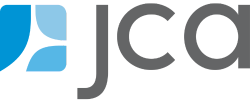Quick Tips: Business Planning for Information Services

Liz Murray
Director of Professional Services
It can be challenging to set meaningful performance goals for support teams such as information services or database management. Advancement services cannot rely on easily quantifiable metrics such as total dollars raised or number of proposals submitted to measure performance like their front-line fundraising counterparts. Instead, service providers must think more broadly about what they hope to achieve and how they will accomplish their vision. Consider the following tips when crafting your business plan:
- Do your homework – Before you can plan for the future, you must first evaluate the past to help identify priorities and key areas for improvement. Your goals will vary depending on your organization’s culture and needs and your team’s staff resources and capacity. Your goals should help advance your cause and be achievable within a specific time frame in your current business context. Collect data using queries from your database or by analyzing your work log. Talk to your internal “clients” to gather feedback on your services. Perform a survey to collect feedback en masse. This information is essential to understanding your strengths and weaknesses as a service provider. Ideally, your business plan should leverage your strengths and address your weaknesses.
- Don’t be afraid of qualitative goals – Managers often rely on quantitative goals because they are easy to measure objectively. However, a quantitative goal is meaningless unless you link it to a specific desired outcome. For many desired outcomes, it is hard to find an effective or efficient way to quantify. For example, you want to improve the accuracy of data in your CRM, but don’t know what to measure. Consider using a qualitative goal designed to improve data entry such as update and centralize documentation for revenue operations and prospect management. You are able to definitively measure success by the completion of the documentation within the specified period. Scared to make the commitment? Build out a detailed action plan outlining how you will accomplish the goal and set key milestones to help keep you on track throughout the year.
- Align your goals – Providing relevant goals help motivate and align team members to the greater organization. In contrast, disconnected or ambiguous goals create confusion and uncertainty. By starting with the high-level goals for your organization, you can develop an effective business plan that aligns the team to the larger organization. For example, if your organization strives to expand its online giving program, you can align your team with that vision by committing to complete an audit/clean-up of e-mail addresses in your database. Contextualizing your goals help staff to understand their impact on your organization’s greater mission, which can improve job satisfaction. It also allows you to make a bigger impact by working collaboratively towards a collective goal.
- Involve your team – As part of the process, it is helpful to hold planning meetings with your team to introduce your goals, brainstorm specific strategies and tactics, and to identify any potential risks. By collaboratively brainstorming, you can leverage your team’s experience and allow new ideas to grow organically. Empowering team members to participate in the planning process will also ultimately help with the acceptance of your business plan.
Creating a business plan for your team is an excellent opportunity to reflect upon your past and consider how your team can improve as subject-matter experts and help make the organization stronger. Your organization looks to you as leaders in technology and information services—this is the time to highlight your abilities and shine!
Sign up for our monthly newsletter to receive the latest tips from our consultants on fundraising best practices, optimizing your technology, and more.
